-
 New productBrake cable
New productBrake cable- €1.35
-
 New productCantilever brake cable
New productCantilever brake cable- €1.49
-
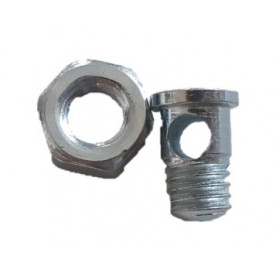 New productBolt clamp cable for bicycle brake caliper
New productBolt clamp cable for bicycle brake caliper- €1.49
-
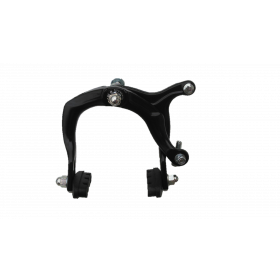 New productBMX brake cable pull by the bottom
New productBMX brake cable pull by the bottom- €5.99
-
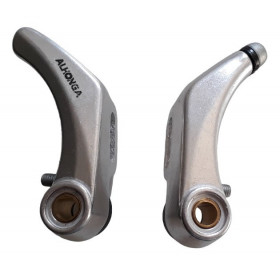 New product -25%Cantilever brake Alhonga
New product -25%Cantilever brake Alhonga- €6.74
- €8.99
-
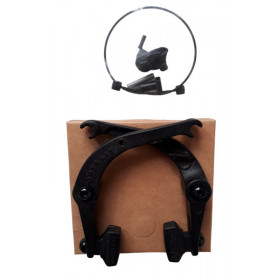 New product -20%U brake Odyssey Springfield
New product -20%U brake Odyssey Springfield- €17.56
- €21.95
-
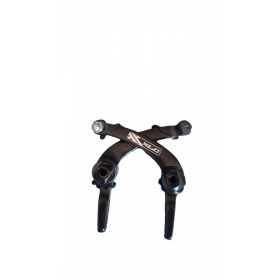 New productRear BMX U brake caliper XLC 68 - 91 mm
New productRear BMX U brake caliper XLC 68 - 91 mm- €7.99
Showing 1-7 of 7 item(s)
In the discipline of BMX Race, brakes play a crucial role in ensuring rider safety and control without compromising speed or agility. Unlike freestyle or dirt BMXs, where specific braking systems are used for tricks, BMX race brakes are designed for performance in competition and tracks.
1. Types of BMX race brakes :
a. Pad Brakes (V-Brakes or U-Brakes)
Pad brakes are the most common on BMX Race bikes due to their lightness and efficiency.
V-Brakes:
Linear braking system offering excellent power and modulation.Easy to adjust and economical.
Compatible with specific aluminum rims to optimize braking.
U-Brakes:
Compact design, usually rear mounted to avoid snags on the trail.Less powerful than V-Brakes, but more than sufficient for BMX racing.
b. Disc Brakes (Optional)
Although more common on dirt mountain bikes or BMXs, disc brakes are appearing on some high-end race BMXs.
Features :
Superior stopping power, even in wet or muddy conditions.Slightly heavier than pad brakes.
Installation requiring frames compatible with disc mounts (post-mount or flat-mount).
2. Technical Characteristics of BMX race brakes :
a. Materials and Design
Calipers :
Made of aluminum for minimal weight and good rigidity.Some high-end models incorporate lighter alloys to optimize performance.
Brake lever:
Lightweight aluminum, often ergonomic for better control.Adjustable position to suit the small hands of young pilots or the preferences of adults.
Cables and sheaths:
Stainless steel cables to limit friction and ensure immediate response.Reinforced sheaths for increased durability, especially on dusty or muddy trails.
b. Compatible Rims
Pad brakes require specific rims, often anodized aluminum to maximize grip.The rims must be perfectly aligned for optimal braking.
c. Power and Modulation
The brakes must provide enough power to slow down quickly without locking the wheels, which could cause a loss of control.Experienced pilots often adjust cable tension to achieve fine modulation.
3. Advantages and Limitations of BMX race brakes:
Benefits :
Lightness: Braking systems, notably V-Brakes, are designed to add a minimum of weight to the bike, essential in BMX racing.Responsiveness: Allows rapid deceleration to negotiate tight turns or manage obstacles.
Simplicity: Easy to maintain and adjust, ideal for competitions where quick adjustments are sometimes necessary.
Boundaries :
Pad wear: Pad brakes require regular maintenance, especially when used on dusty or abrasive tracks.Compatibility: Disc brakes are not yet widely adopted in BMX racing, as they add weight and require specific frames.
4. Recommended brands and models:
a. Pad Brakes
Shimano DXR V-Brake
- Lightweight and high-performance, designed specifically for BMX competition.
- Offers precise braking with excellent modulation.
Promax P-1
- Compact and efficient brakes, with robust aluminum construction.
- Ideal for pilots looking for an affordable alternative.
Tektro BX25
Designed for BMX racing, offering good value for money.b. Disc Brakes (for advanced BMX Race)
SRAM Level TLM
Lightness and braking power, suitable for demanding competitions.Shimano XTR BR-M9100
High performance with modular power and reduced weight.5. Tips for purchasing and maintaining BMX race brakes:
a. Choosing the Right Brake:
- Skill Level: V-Brakes are suitable for most riders, while disc brakes are recommended for advanced competitions.
- Compatibility: Check frame mounting brackets (calipers or disc).
- Weight: Choose lightweight materials to avoid weighing down the BMX.
b. Regular Maintenance:
- Clean the pads and rims regularly to prevent dust accumulation.
- Replace worn pads or damaged cables.
- Check cable tension before each run to ensure immediate response.
c. Adjustments:
- Position the levers for easy access and maximum comfort.
- Adjust the calipers to avoid unnecessary friction on the wheel.
6. Conclusion
BMX Race brake is a delicate balance between lightness, efficiency and durability. Pad brakes, particularly V-Brakes, remain the preferred choice for their simplicity and performance. Brands like Shimano and Promax offer reliable models adapted to the needs of competitors. With rigorous maintenance and precise adjustments, a good braking system will allow you to remain competitive while ensuring your safety on the track.
